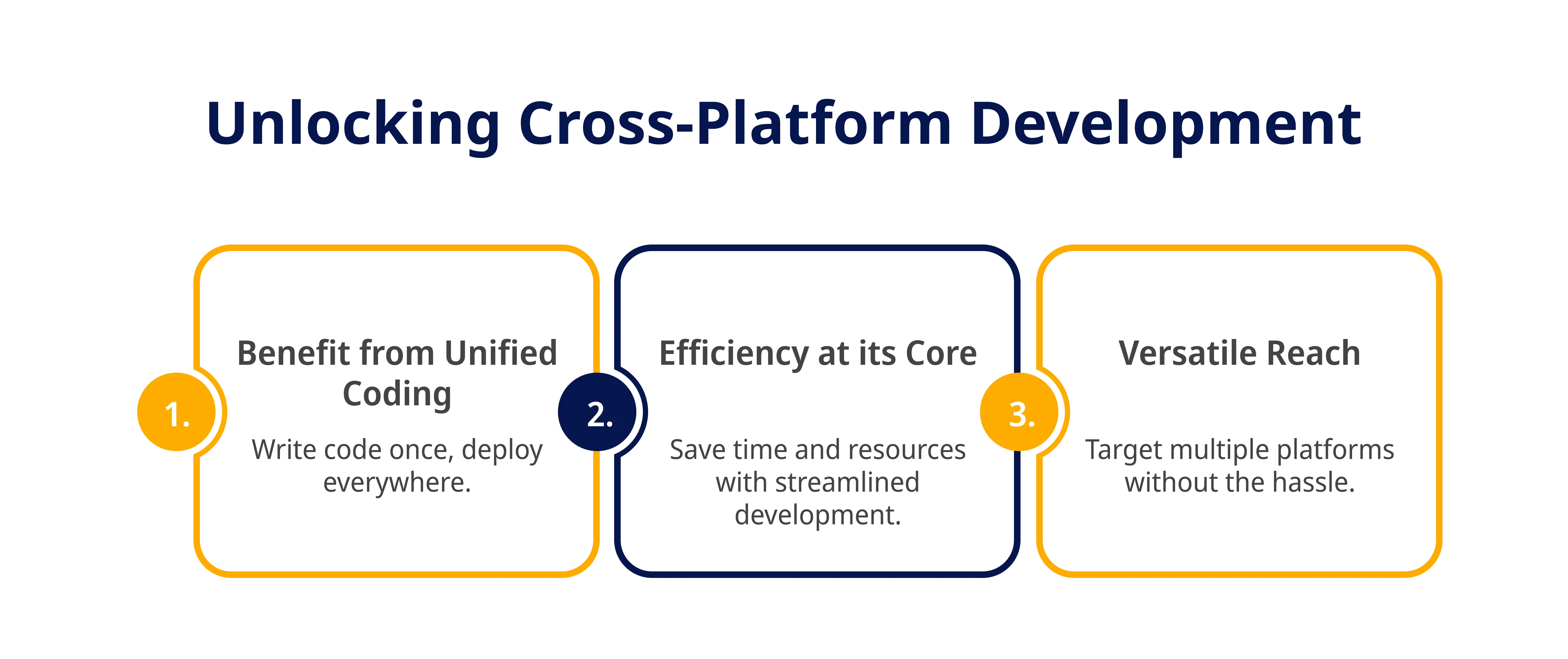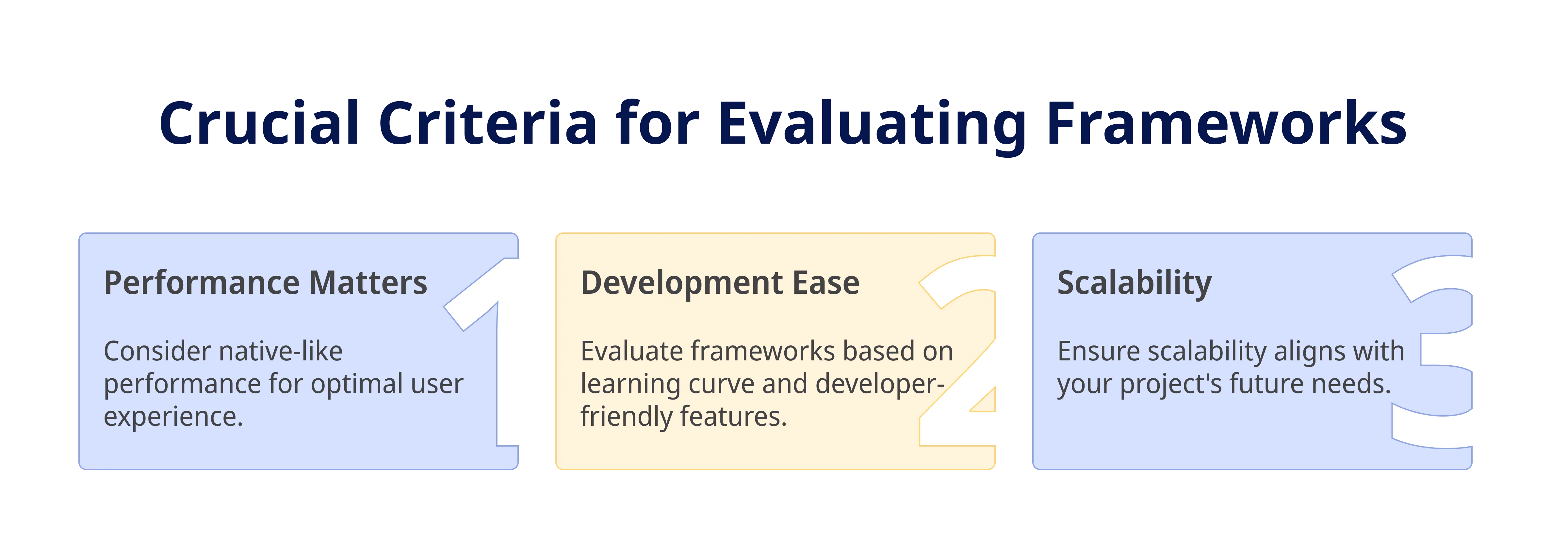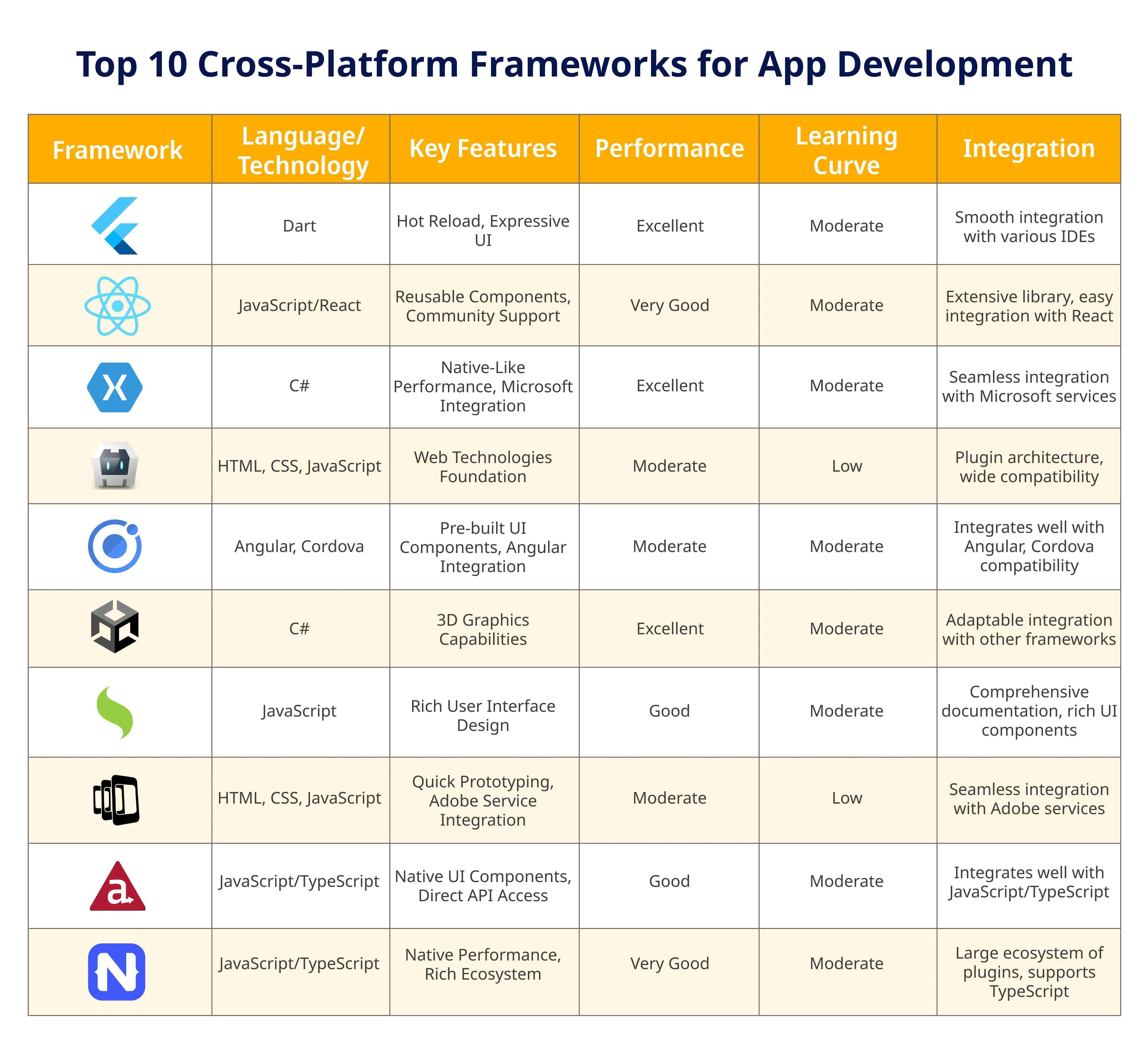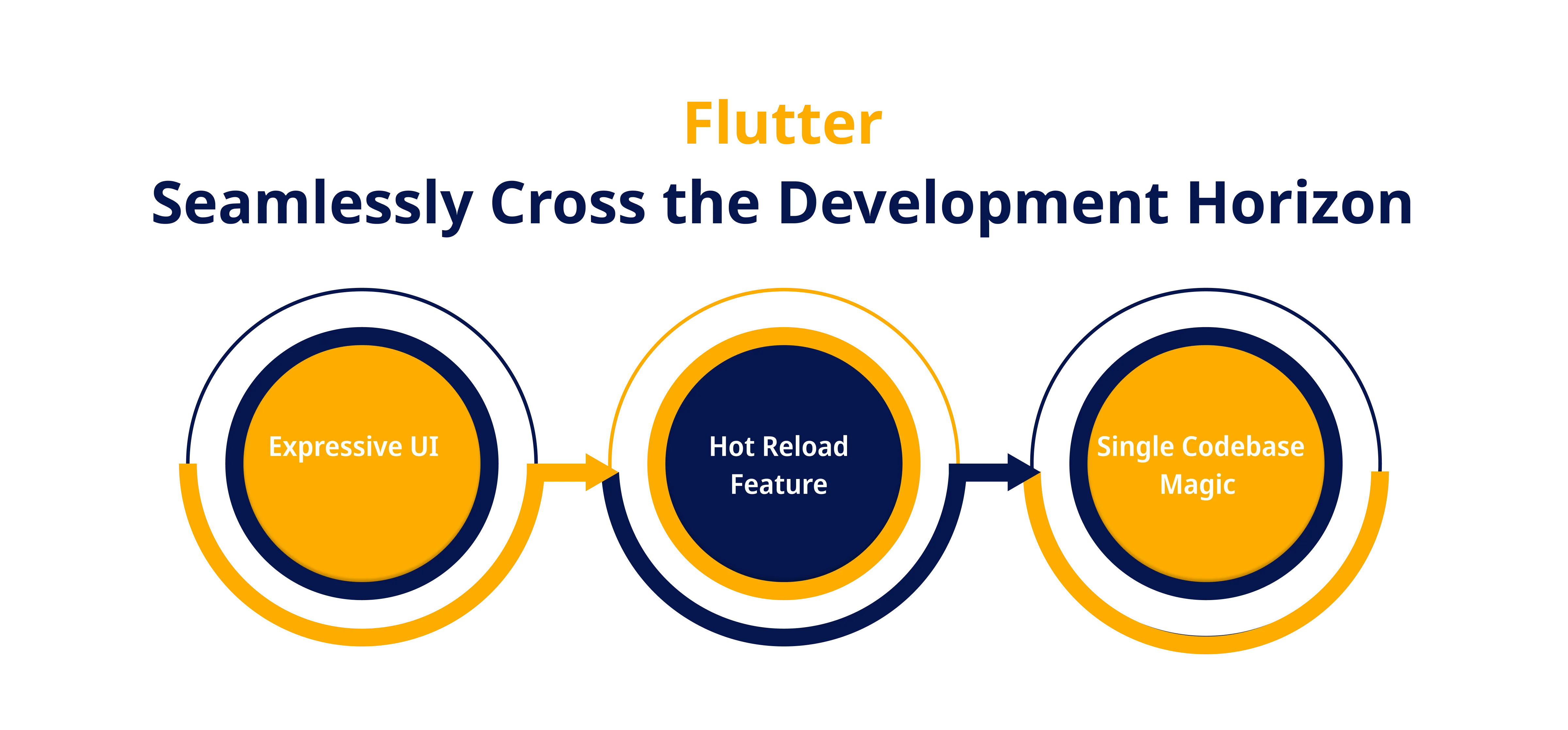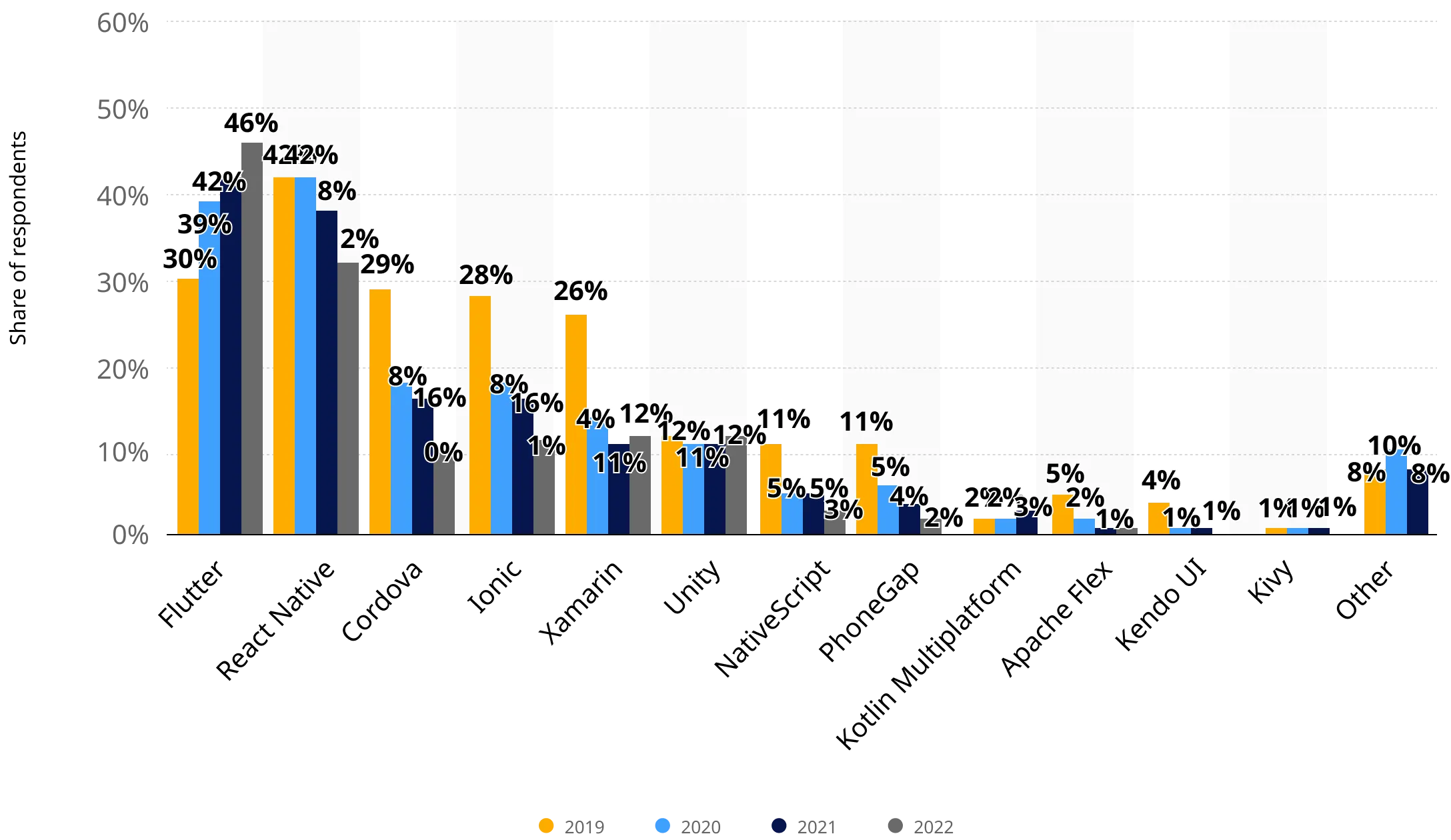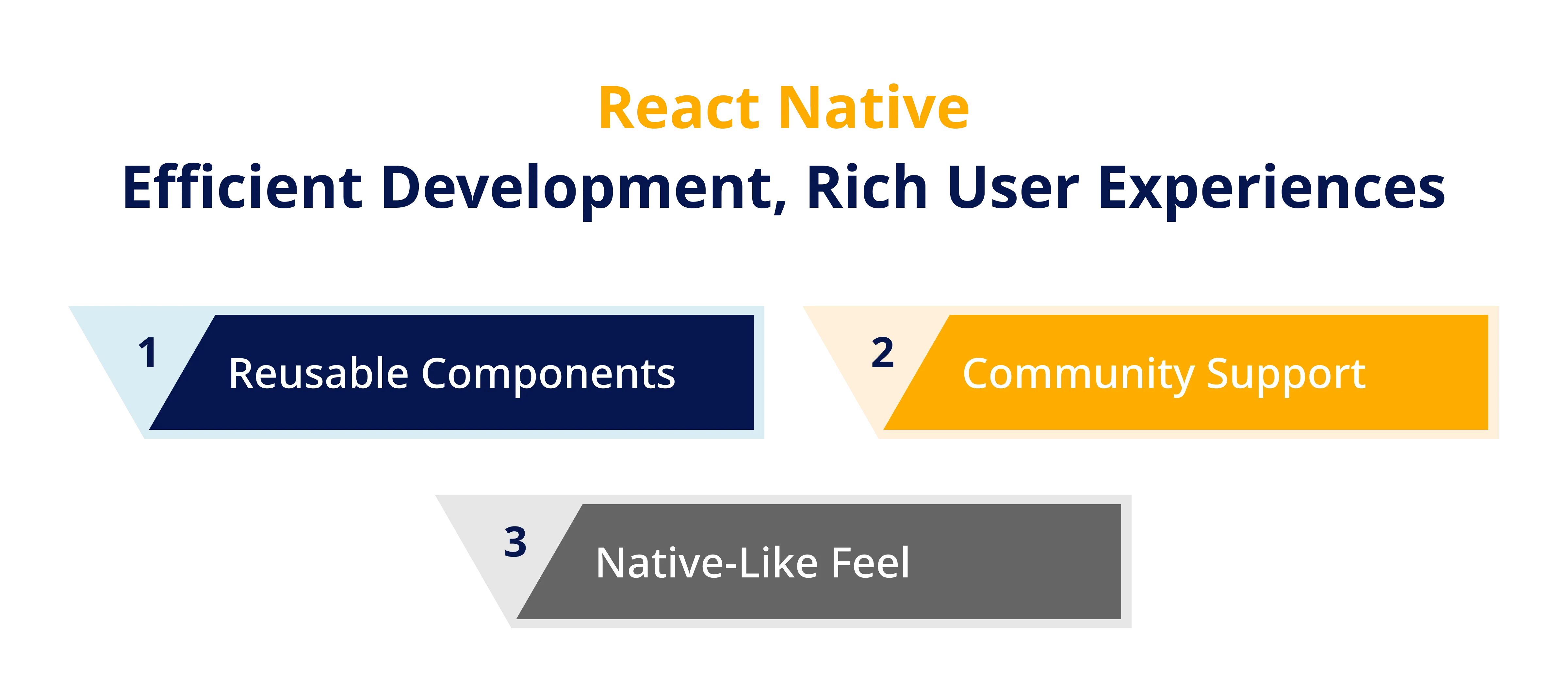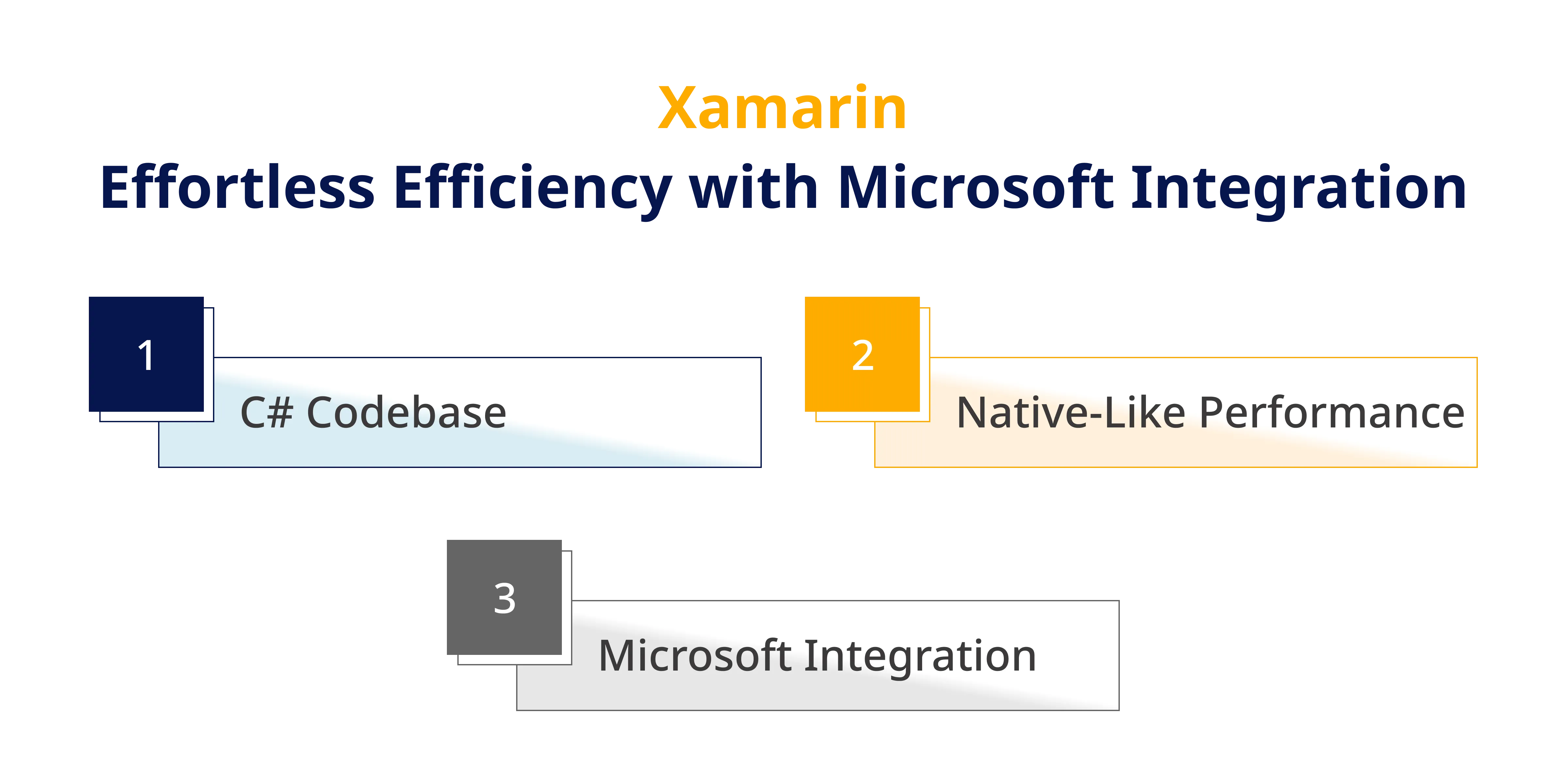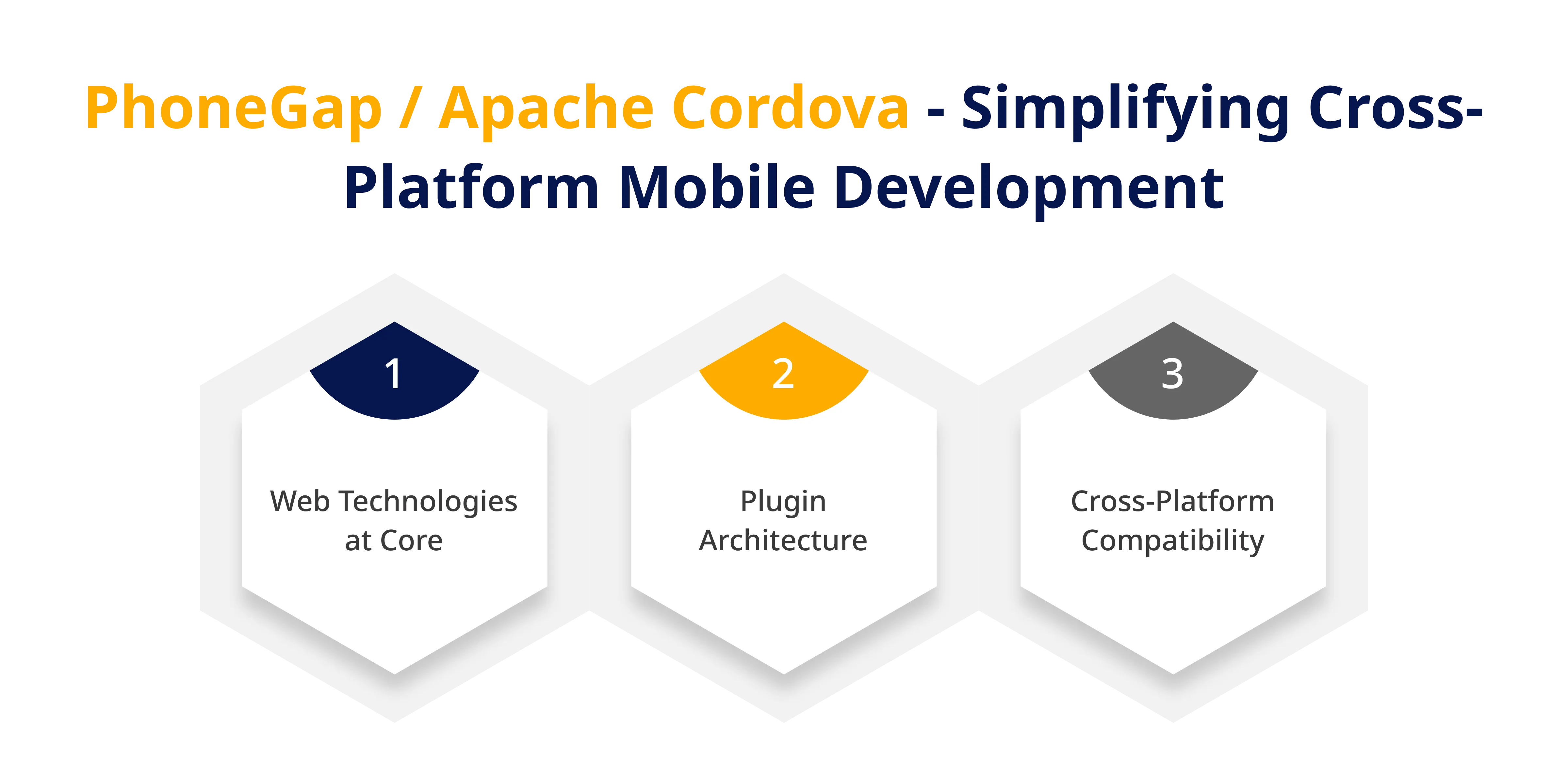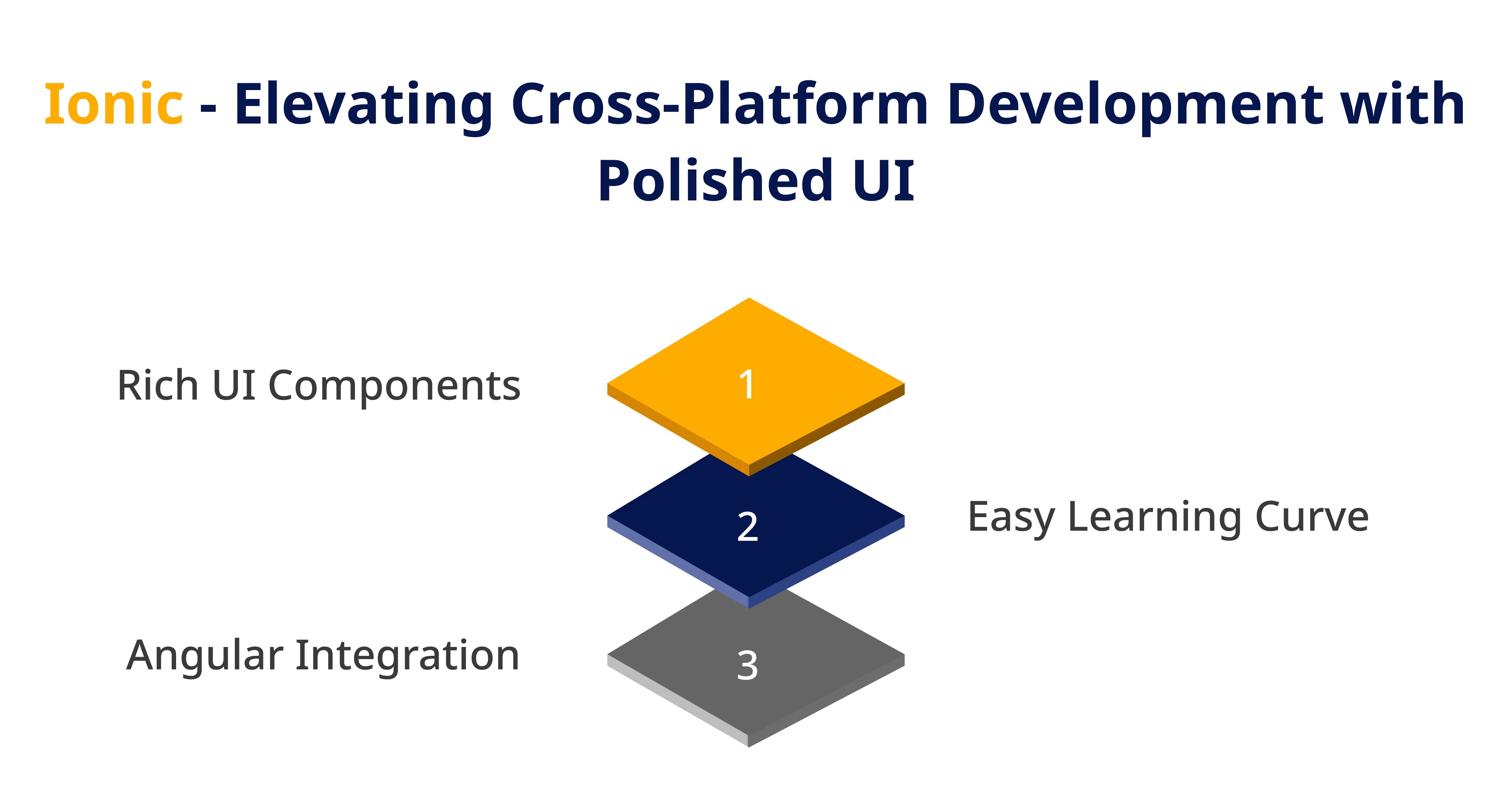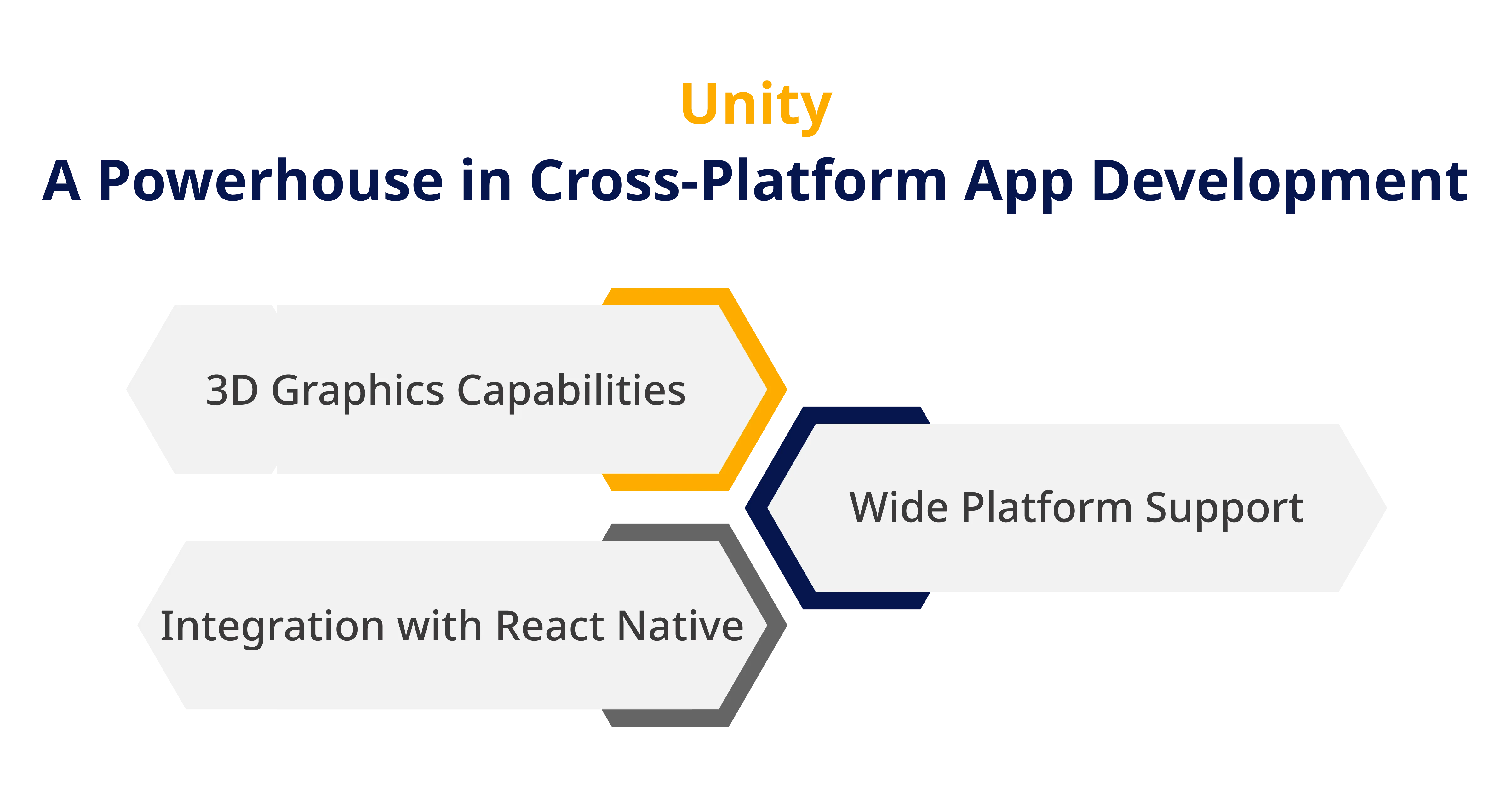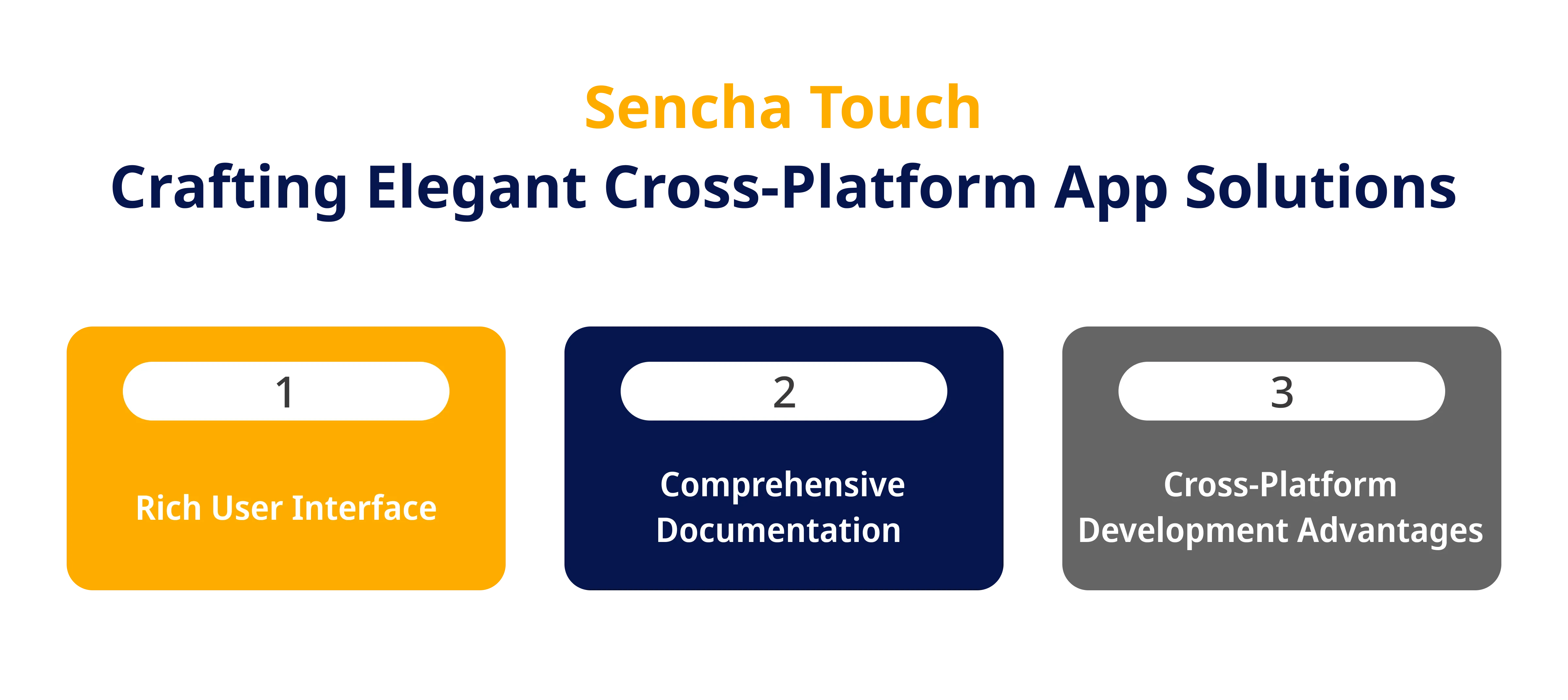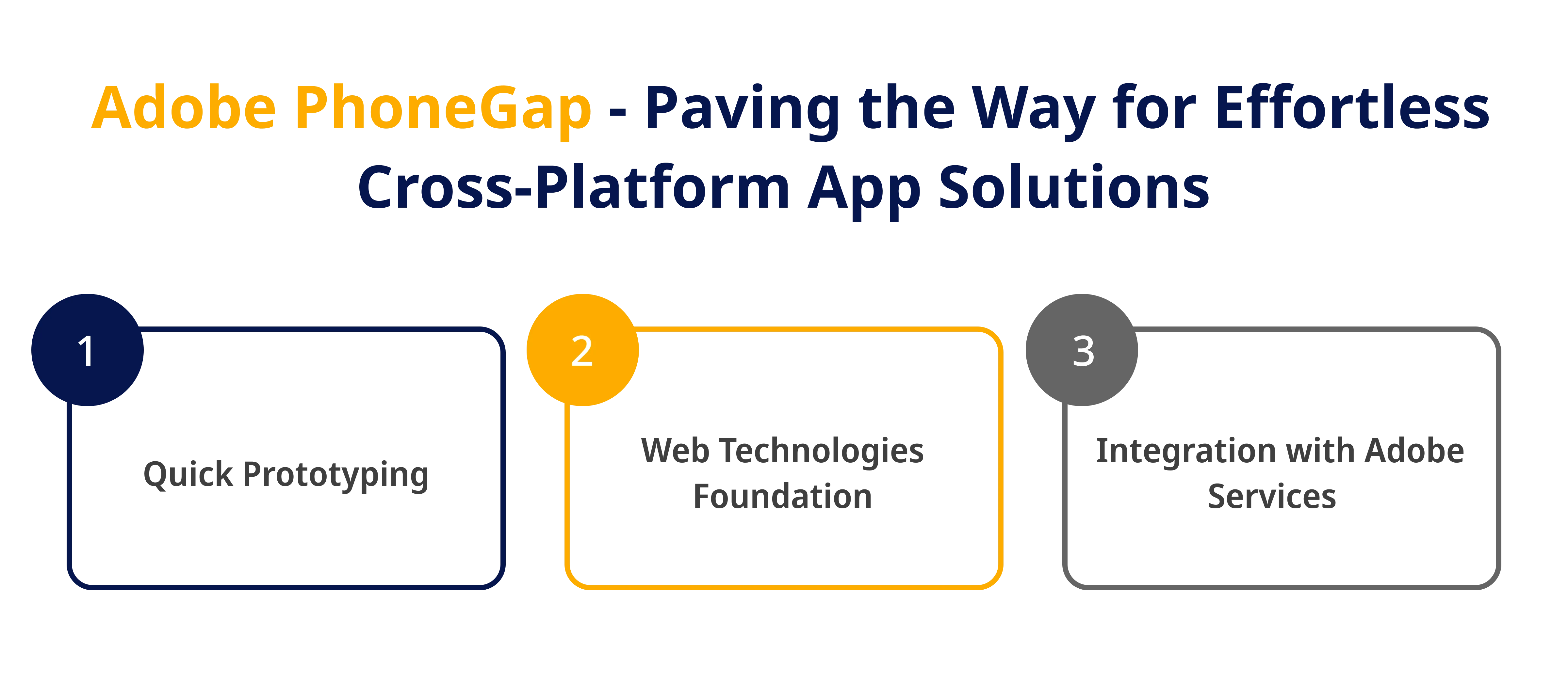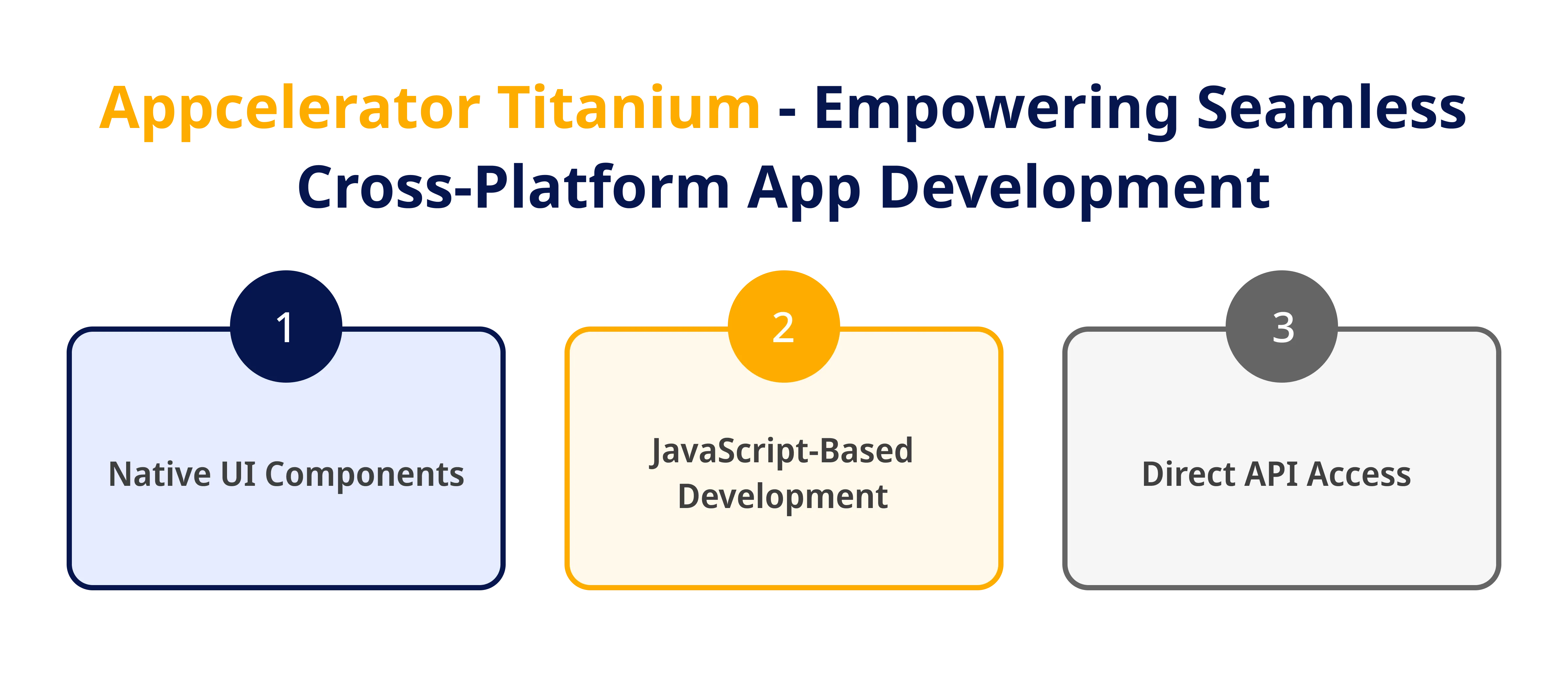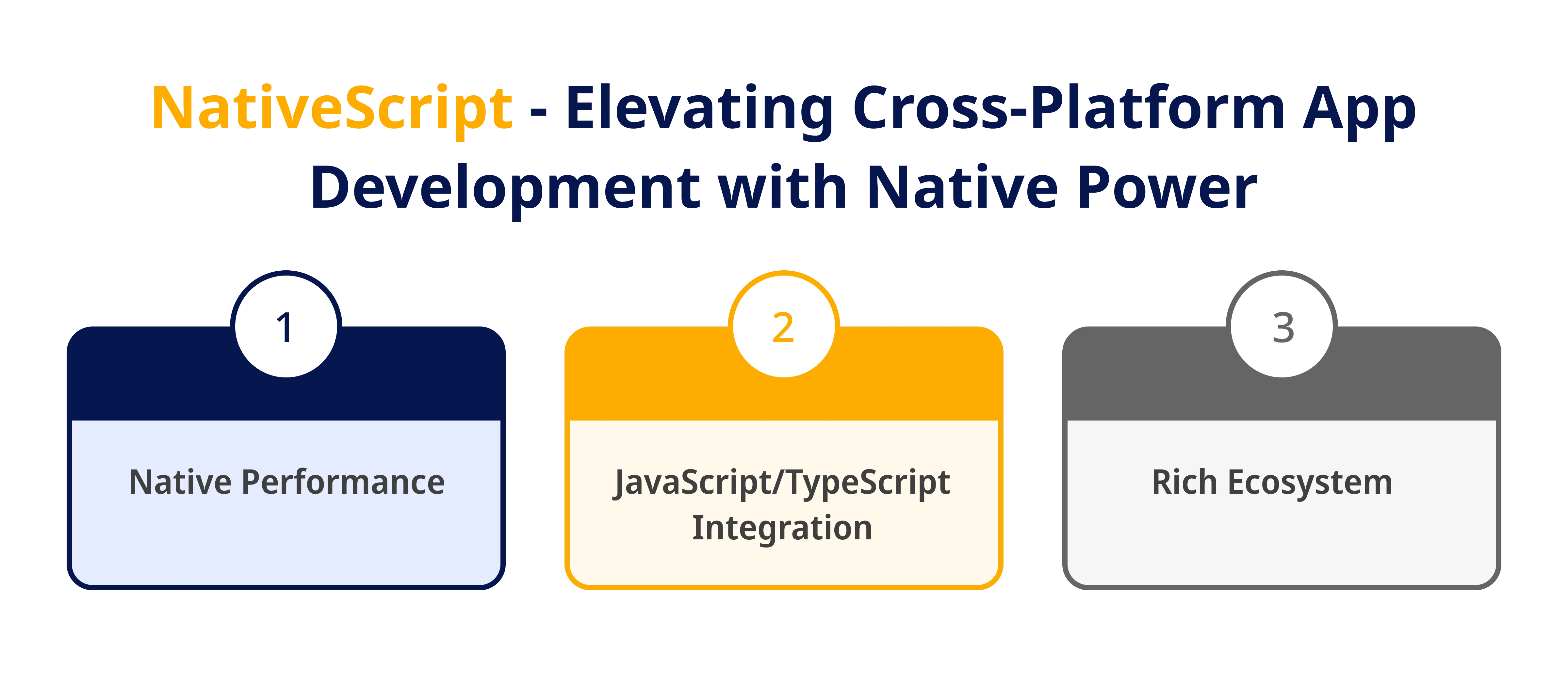Total revenue from the app market is expected to show an annual growth rate of 9.59%, resulting in a projected market volume of US$673.80 bn by 2027.
Building mobile apps fast while maximizing code reuse demands harnessing cross-platform frameworks.
But with over 15 major options, identifying the best choice is challenging. This blog post will direct you to the 10 leading cross-platform frameworks for app development.
We’ll cover versatile options like React Native, Flutter, Xamarin, and Ionic that excel at delivering native performance while sharing code across iOS, Android, and the web.
Understanding each framework’s technical architecture, strengths, and limitations allows you to align selections to your target platforms, experience level, and app objectives.
We’ll also cover critical adoption factors, like community support and integration complexity.
Let’s find the ideal cross-platform solution for your next mobile or web app project!
Understanding Cross-Platform Development
In the app development world, cross-platform development stands as a beacon of efficiency, catering to the diverse needs of developers and businesses alike.
At its core, cross-platform development involves creating applications that seamlessly operate across various devices and operating systems.
Let’s unravel the essence of this game-changing approach in a simple yet insightful manner.
Key Aspects
1. One Codebase, Multiple Platforms: Cross-platform development enables engineers to write code once and deploy it on different platforms, saving time and effort.
2. Cost-Efficiency: Businesses can significantly reduce development costs by eliminating the need for separate codebases for each platform.
3. Faster Time to Market: Developing cross-platform apps expedites the release process, reaching a wider audience sooner than traditional methods.
4. Consistent User Experience: Users across various devices encounter a uniform interface and functionality, ensuring a seamless experience.
Why It Matters
- Cross-platform development addresses the pain points often associated with traditional app development.
- Understanding this approach is pivotal for our targeted audience, which includes app developers and those seeking top-notch cross platform app development companies.
- It streamlines the development process, cuts costs, and accelerates the time it takes to turn ideas into fully functioning applications.
Elevate your app development game with our insights on the top frame
Criteria for Evaluating Cross-Platform Frameworks
When talking about cross platform app development, choosing the right framework is crucial. Once this is done appropriately, you can optimize the Cross-Platform app.
To ensure your development process is smooth and successful, evaluating frameworks based on specific key criteria is crucial.
Let’s break down these considerations in a way that’s both accessible and informative.
1. Performance: Efficient execution of code across various platforms.
Cross-platform frameworks should offer performance levels that align with your application’s demands, ensuring a smooth user experience.
2. Community Support: Active and engaged community for ongoing assistance.
A vibrant community around a framework indicates a robust support system, providing solutions to challenges and keeping the framework up-to-date.
3. Ease of Learning: Bullet: User-friendly with accessible documentation.
Frameworks should be user-friendly, easing the learning curve for developers, and supported by comprehensive documentation for easy reference.
4. Integration Capabilities: Seamless integration with third-party tools and services.
A good framework should allow smooth integration with other tools and services, facilitating a more holistic approach to custom application development services.
5. Development and Debugging Tools: Adequate tools for efficient development and debugging.
Robust tools simplify the development process, aiding developers in creating and debugging applications effectively.
6. Scalability: Adaptable to the growth of your application.
An ideal framework should be scalable, accommodating the evolving needs of your application as it gains popularity.
Also Read: Flutter Vs React Native Vs Xamarin – Top Cross Platform Mobile App Development Frameworks
Top 10 Cross-Platform Frameworks: A Comparative Analysis
For a successful cross-platform app development, here are the top 10 frameworks, each with unique strengths and characteristics, to help you make an informed decision tailored to your needs.
1. Flutter
Flutter, Google’s brainchild, is a powerhouse in cross-platform app development, offering many advantages for those seeking efficient and polished applications.
According to Statista, for Developers worldwide, Flutter stands out as the top choice for cross-platform mobile development, with 46 percent of software developers using it.
The survey also reveals that approximately one-third of mobile developers opt for cross-platform technologies or frameworks. At the same time, the remaining two-thirds prefer native tools for their mobile development projects.
Source: Statista
Let’s understand what makes Flutter stand out:
- Expressive UI: Flutter is renowned for its visually stunning and customizable user interfaces, ensuring your app’s functionality and aesthetics stand out.
- Hot Reload Feature: This nifty tool allows developers to make changes on the fly, witnessing instant updates during development—a game-changer for efficiency.
- Single Codebase Magic: With Flutter, you write code once and deploy it on both iOS and Android platforms, saving time and resources.
Flutter’s robust features make it a standout choice, providing a seamless and enjoyable development experience for those diving into custom application development services or exploring web app development services.
Leverage our expertise to supercharge your cross-platform development.
2. React Native
Regarding optimization of cross-platform app development, React Native emerges as a powerful and popular contender.
Here’s a glimpse into what makes React Native a go-to choice for developers:
- Reusable Components: React Native’s modular approach allows developers to build with reusable components, streamlining the development process.
- Community Support: With a robust and extensive community, React Native ensures a wealth of resources, plugins, and solutions are readily available.
- Native-Like Feel: Applications developed with React Native deliver a native-like experience, combining efficiency with a polished user interface.
For those navigating the landscape of Flutter app development and seeking a framework that balances efficiency and user experience, React Native stands tall, offering a versatile solution for cross-platform app development.
3. Xamarin
Xamarin, under the Microsoft umbrella, is a robust framework that seamlessly integrates with the tech giant’s suite of tools.
Let’s understand what makes Xamarin a compelling choice for cross-platform app development:
- C# Codebase: Xamarin allows developers to use C# for building applications, providing a familiar language for many developers.
- Native-Like Performance: Leveraging native APIs, Xamarin ensures high-performance applications that match the fluidity of native ones.
- Microsoft Integration: For those immersed in Microsoft’s ecosystem, Xamarin effortlessly integrates with Azure and other Microsoft services.
For those exploring the landscape of Flutter app development and considering efficiency and Microsoft synergy, Xamarin emerges as a solid choice.
Whether aiming for cross-platform ease or planning to hire dedicated developers, Xamarin’s blend of familiarity and performance makes it an appealing option.
4. PhoneGap / Apache Cordova: Simplifying Cross-Platform Mobile Development
PhoneGap, now Apache Cordova, is a versatile player in cross-platform mobile tools, streamlining app development for various platforms.
Here’s a closer look at what makes this framework a contender in mobile app development solutions:
- Web Technologies at Core: PhoneGap utilizes HTML, CSS, and JavaScript, making it accessible to developers familiar with web development.
- Plugin Architecture: With a modular approach, PhoneGap allows the integration of plugins for custom features, enhancing functionality.
- Cross-Platform Compatibility: PhoneGap applications can run seamlessly on various platforms, catering to a broader audience.
When comparing Flutter app development and React Native app development, PhoneGap/Apache Cordova shines for those seeking simplicity and efficiency in cross-platform mobile development.
Whether you’re a seasoned developer or exploring mobile app development solutions, this framework offers a user-friendly entry point into the diverse world of app creation.
Also read: Best Programming Languages for Game Development
5. Ionic: Elevating Cross-Platform Development with Polished UI
Ionic, a standout among cross-platform mobile tools, combines the power of Angular and Apache Cordova to streamline app development.
Let’s explore why Ionic is a preferred choice in the landscape of mobile app development solutions:
- Rich UI Components: Ionic offers pre-built UI elements, ensuring a polished and professional appearance to develop cross-platform apps
- Easy Learning Curve: Designed for developers familiar with web technologies, Ionic provides an accessible entry point into cross-platform development.
- Angular Integration: Leveraging the strengths of Angular, Ionic enhances development capabilities for those already immersed in this popular web framework.
In the competitive field of Flutter app development and React Native app development, Ionic stands out for its emphasis on user interface excellence.
Whether you’re diving into cross-platform mobile development for the first time or seeking efficiency in your development process, Ionic offers a robust solution for creating visually appealing and feature-rich applications.
Also Read – 12 Top JavaScript Mobile Frameworks To Know
6. Unity
Unity, renowned for its prowess in game development, has evolved into a versatile player in cross-platform app development frameworks.
Here’s what makes Unity an interesting choice in the landscape of app development:
- 3D Graphics Capabilities: Unity’s strength lies in its ability to handle advanced 3D graphics, making it ideal for applications requiring immersive visual experiences.
- Wide Platform Support: With Unity, you can reach a broad audience as it supports deployment on various devices and platforms.
- Integration with React Native: Unity’s adaptability extends to integrating with React Native, offering flexibility in development choices.
Unity is a dynamic option for those considering cross-platform app development advantages and exploring app development framework comparisons.
Whether you’re into React Native app development or looking to hire dedicated developers for a comprehensive cross-platform solution, Unity’s diverse capabilities make it a powerhouse in the evolving app development landscape.
Dive into our guide for expert insights and elevate your brand's digital presence.
7. Sencha Touch
Sencha Touch, a prominent player in cross-platform app development frameworks, brings a touch of sophistication to the realm of app development.
Let’s explore the distinctive features that make Sencha Touch a noteworthy choice for those seeking efficiency and elegance in their cross-platform app solutions.
- Rich User Interface: Sencha Touch strongly emphasizes delivering a high-quality user experience through its rich and polished user interface.
- Comprehensive Documentation: Skilled developers benefit from extensive documentation, making it a valuable tool in the cross-platform development guide.
- Cross-Platform Development Advantages: Sencha Touch streamlines the creation of applications that seamlessly operate across various devices and platforms, maximizing reach.
Sencha Touch stands as a reliable companion in app development efficiency and tools.
Whether entrenched in React Native app development or exploring cross-platform app development advantages, Sencha Touch offers a sophisticated solution for crafting applications that captivate users with their elegance and functionality.
Also Read: Why Choose Flutter For Cross Platform Mobile App Development?
8. Adobe PhoneGap
Adobe PhoneGap stands out in the array of cross-platform app development frameworks, offering a seamless and accessible avenue for developers.
Let’s understand the distinctive features that make PhoneGap a favorable choice for those aiming to develop cross-platform apps efficiently:
- Quick Prototyping: PhoneGap facilitates rapid development and testing, allowing developers to swiftly bring ideas to life and iterate through prototypes.
- Web Technologies Foundation: Utilizing HTML, CSS, and JavaScript, PhoneGap leverages familiar web technologies, making it approachable for a broad range of developers.
- Integration with Adobe Services: Smoothly incorporating design elements and assets from Adobe’s suite, PhoneGap aligns with an existing toolkit.
PhoneGap is a practical and user-friendly tool when considering cross-platform app development advantages and app development efficiency.
Whether planning a cross-platform development guide or seeking reliable app development tools,
Adobe PhoneGap provides a straightforward path to easily crafting cross-platform app solutions.
Also read: How To Optimize Your Cross-Platform App Performance
9. Appcelerator Titanium
Among popular cross-platform app development frameworks, Appcelerator Titanium emerges as a dynamic tool, offering a unique approach to building applications.
Let’s find out the distinctive qualities that make Appcelerator Titanium a compelling choice for those aiming to develop cross-platform apps:
- Native UI Components: Appcelerator Titanium enables the creation of native-like interfaces, ensuring applications align seamlessly with the look and feel of each platform.
- JavaScript-Based Development: Leveraging the familiarity of JavaScript, developers can craft cross-platform apps without delving into multiple programming languages.
- Direct API Access: Appcelerator Titanium provides direct access to device APIs, empowering developers to tap into advanced functionalities for enhanced app experiences.
For those venturing into the world of cross-platform app development, Appcelerator Titanium stands out with its focus on native performance and simplified development through JavaScript.
Whether you’re a seasoned developer or beginning the cross-platform landscape, Appcelerator Titanium offers a powerful and accessible toolset for bringing your app vision to life across various platforms.
Uncover the secrets to efficient cross-platform development and ensure your app's success.
10. NativeScript
NativeScript takes the stage as a potent player in cross-platform app development frameworks, offering a unique blend of versatility and native performance.
Following are some of the key attributes that make NativeScript a standout choice for those looking to develop cross-platform apps seamlessly:
- Native Performance: NativeScript bridges the gap by providing native-like performance, ensuring apps run smoothly on various platforms.
- JavaScript/TypeScript Integration: Developers can leverage the familiarity of JavaScript/TypeScript, making the development process accessible to a broad audience.
- Rich Ecosystem: NativeScript boasts a robust ecosystem of plugins and modules, extending the functionality and scope of applications.
NativeScript shines among the cross-platform app development frameworks, focusing on native power and streamlined development.
Whether you’re a seasoned developer or just starting to explore cross-platform frameworks, NativeScript offers an efficient pathway to crafting high-performance apps that resonate seamlessly across different devices and platforms.
Also read: Top 10 Cross-Platform Frameworks For App Development
Conclusion
The frameworks profiled in this guide represent today’s leading options for high-performance cross-platform app development.
React Native, Flutter, and Xamarin all enable writing shared mobile and web codebases that still feel native and smooth for users.
Carefully evaluate your target platforms, experience level, app objectives, and technical environment when selecting between these major cross-platform players.
There is no universally best framework – only what works optimally for your needs.
For many, React Native provides the right balance of developer familiarity, vast third-party integrations, and extensive community support.
But Flutter’s speed and native compilation can’t be beaten for specific use cases. Newcomers may favor the turnkey approach of low-code cross-platform tools as well.
The future points towards even greater capabilities, enabling fully native cross-platform apps indistinguishable from platform-specific code.
A web development company like ValueCoders can help you find the right framework for your app.
But today’s leading options already deliver immense value.
By taking advantage of cross-platform development, teams maximize output while minimizing effort.
Remember to focus on solving business problems first, then leverage these revolutionary tools to deliver user experiences tailored to each platform.
The power to build excellent apps everywhere allows your solutions to thrive in our multi-device world.


